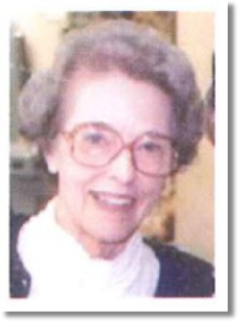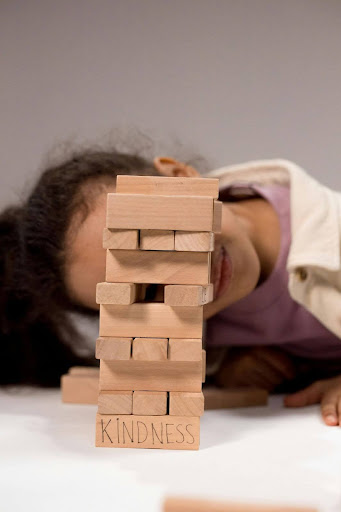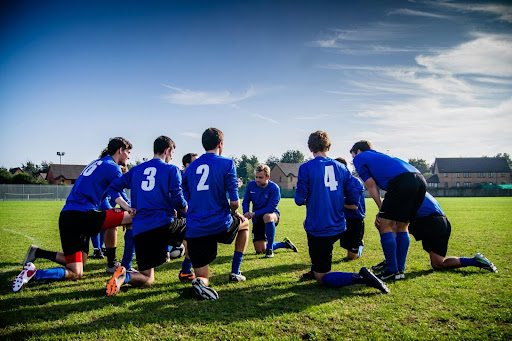 Imagine the future.
Imagine the future.
Your community foundation helps bring your charitable goals to life.
Thank you for the opportunity to work together! Even in a year like 2025, we’re honored to help philanthropy in our community celebrate big and little victories as we all work together to improve the quality of life in the community we love.
A bright spot in the world of charitable giving is that philanthropy in the United States reached a significant milestone in 2024, with individuals, bequests, foundations, and corporations contributing an estimated $592.50 billion to charitable causes. That’s according to the recently-released Giving USA report, citing a 6.3% increase in current dollars from the previous year, or a 3.3% increase when adjusted for inflation.
As always, we’re happy to offer insights into trends and issues that shape the way you carry out your charitable giving priorities:
–Many philanthropic individuals serve on the board of directors of a charity–and in many cases more than one! Learn about the factors you may want to consider before you say yes to a board invitation. As always, the community foundation is here as a resource and sounding board.
–Finding purpose is often a top priority for retirees. Carrying out your purpose requires not only planning your time, but also thoughtfully considering how to allocate financial resources, including how you might leave a legacy. The community foundation can help.
–Tax laws remain a topic of conversation, including in conversations about charitable giving. Check out the latest updates and learn how changes might impact the way you approach philanthropy. Our team is here to help!
Whether you’ve established a fund at the community foundation, given to an existing fund, or are just beginning to get involved, thank you for all you do to help charitable giving in our region stay strong!
With gratitude,
Angie Tatro,
CKCF CEO
 More than meetings: Considerations for joining a board
More than meetings: Considerations for joining a board
If you’ve served on a charity’s board of directors, you know that the role demands much more than simply showing up for meetings. Charities benefit from board members’ active engagement, strategic oversight, and a deep commitment to the organization’s mission. Indeed, board members are fiduciaries who are responsible for guiding the nonprofit’s culture, ensuring sound governance, providing financial stewardship, and acting as ambassadors and advocates in the community. Beyond legal duties, they are expected to help secure resources, oversee leadership, and contribute to the charity’s long-term sustainability and impact.
If this sounds like a lot, it’s because it is! Before you make the leap to join a charity’s board, please consider reaching out to our team. The community foundation can serve as an invaluable resource to support your decision-making process. Our professionals know a lot about local charities, including in-depth information about programs, impact, leadership, financial stability, and reputation. We’re happy to provide an impartial assessment of the charity’s governance practices, evaluate alignment with your values, and fill you in on the current needs or challenges the board is facing.
Thorough due diligence is crucial, not only to ensure that the board position would be a good fit for your skills, interests, and availability, but also to avoid potential legal pitfalls and liabilities that could stand in the way of your ability to carry out your fiduciary duties. Our team can provide a high-level review of these duties, including:
- A duty of loyalty to prioritize the charity’s interests and avoid conflict;
- A duty of compliance to adhere to the nonprofit’s mission and legal requirements; and
- A duty to “manage accounts,” which means overseeing financial stability and accountability
These duties translate into real responsibilities for strategic planning, fundraising, financial oversight, and executive evaluation.
Please reach out anytime. It is our honor to help you make a difference in the community we all love, whether that’s through charitable giving, board service, volunteering, or advocacy. The community foundation is your home for philanthropy in all of its many forms.
 Advancing your purpose: Considerations for a philanthropic retirement
Advancing your purpose: Considerations for a philanthropic retirement
If you’ve recently retired, you may still be figuring out the ideal balance of activities. If you’ve been retired for several years, you might still be trying to figure it out! Time and again, research shows us that finding purpose is an essential component of a happy and satisfying retirement. Consider the following:
- A large-scale, longitudinal study used data from 13,770 older adults, finding that those with a higher sense of purpose at baseline were significantly less likely to develop unhealthy behaviors.
- Other research used a nationally representative panel of over 8,000 American adults and determined that, contrary to some beliefs, retirement can actually increase a person’s sense of purpose.
- A cross-sectional study analyzed data from nearly 2,000 adults and found that sense of purpose was significantly associated with lower depression and anxiety in both retirees and non-retirees.
Indeed, retirement offers a unique opportunity for individuals to rediscover their sense of purpose beyond the confines of a traditional career. The community foundation’s team and charitable tools can play a pivotal role in this journey. Here’s how:
Check in on tax planning
For starters, the community foundation team can work with you and your tax advisors to be sure your charitable giving is reflected in your estate and financial plan to achieve the impact you’re seeking. Among other issues, we’ll help you and your advisors explore whether itemizing your tax deductions in certain years might save you money. You can “bunch” charitable donations into your donor-advised fund in higher-income years to exceed the itemization threshold, then support your favorite causes steadily over time from that fund. If you’re 70 ½ or older, we’ll also help evaluate whether tax-free transfers directly from your IRA—up to $108,000 (in 2025)—to a designated, unrestricted, or field-of-interest fund at the community foundation would be an effective planning technique for your situation.
Involve the next generation
Many retirees have more time to include family members in their personal charitable giving activities. The community foundation team can work alongside you and your estate planning advisors to name children or grandchildren as advisors or successor advisors to your donor-advised fund and invite them to participate in site visits and educational events. This is a great way to strengthen family bonds while building a legacy of generosity across generations. Our team can help you identify ways to include children and grandchildren in site visits to favorite charities and participate in education sessions about community needs and the nonprofits that are making a difference for people who live in our region.
Build a legacy
Many people update their estate plans just after they retire. As you work with your tax and estate planning advisors, consider incorporating a gift in your estate plan that will allow your charitable legacy to live on for generations. For example, many people name a fund at the community foundation as the beneficiary of their IRAs because of the significant tax advantages when compared with leaving the IRAs to heirs. The community foundation is happy to work with you and your advisors to establish a special fund to receive assets from your estate, whether from an IRA or other type of estate gift. The fund can be structured as a permanent endowment to address the community’s greatest needs far into the future, or even support the community foundation’s operations to ensure that philanthropy and stewardship continue to thrive for generations to come. You can also name your donor-advised fund as an estate beneficiary, and your children and grandchildren can serve as advisors to the fund so that they, in turn, can carry on the spirit of charitable giving in the family’s name.
We look forward to working with you throughout your retirement years to ensure that your community dreams are fulfilled through the power of charitable giving. Please reach out anytime.
 One Big Beautiful Bill Act: Three Insights for Philanthropy
One Big Beautiful Bill Act: Three Insights for Philanthropy
The One Big Beautiful Bill Act was signed into law by President Trump on July 4, 2025, after the House of Representatives approved the Senate’s changes to H.R. 1, which passed the House by a narrow margin in May.
The OBBBA, with nearly 900 pages of provisions, reshapes policy across major sectors of the U.S. economy. Included in the OBBBA are several provisions that impact philanthropy. Three major takeaways are of particular importance as the community foundation helps donors, fund holders, and nonprofits–as well as attorneys, CPAs, and financial advisors–navigate charitable planning opportunities over the months and years ahead.
(Notably, the OBBBA omits several provisions that appeared in previous versions of the legislation, such as a proposed increase to the net investment income tax on private foundations.)
Insight #1: Standard deduction goes higher
What’s in the OBBBA?
The new law makes permanent the standard deduction increases under the Tax Cuts and Jobs Act of 2017 (TCJA), increasing the standard deduction for 2025 to $15,750 for single filers and $31,500 to taxpayers who are married and filing jointly. The new law also expands the “bonus” deduction for taxpayers 65 and older through 2028.
What’s more, under the new law, individuals who itemize may take charitable deductions only to the extent the charitable deductions exceed 0.5% of adjusted gross income. Furthermore, taxpayers in the top bracket can only claim a 35 percent tax deduction for charitable gifts instead of the full 37 percent that would otherwise apply to their income tax rate. Note also that the final bill extended the 60% of adjusted gross income contribution limitation for cash gifts made to certain qualifying charities.
What does this mean for charitable giving?
With even fewer taxpayers eligible to itemize, and deductions capped for high-income earners, we’re likely to see a continuation of the chilling effect on charitable giving that occurred in the wake of the TCJA.
What can you do?
If you regularly support charities, it’s important to continue to do so whether or not you’re benefiting from a tax deduction. Our community needs you, now more than ever. If you’re a nonprofit, or if you’re an attorney, CPA, or financial advisor who works with charitable clients, remember that people do not give to charity solely to secure a tax deduction. Keep in mind that many other factors motivate charitable giving, and philanthropy is an important priority for many families. (This article in the Stanford Social Innovation Review has stood the test of time.)
Insight #2: Deduction for non-itemizers
What’s in the OBBA?
The new law includes a provision, effective after 2025, allowing non-itemizers to take a charitable deduction of $1,000 for single filers and $2,000 for taxpayers who are married and filing jointly. As has been the case in the past, gifts to donor-advised funds are not eligible. Unlike a previous (but smaller) similar provision, though, this law is not set to sunset.
What does this mean for charitable giving?
After the TCJA went into effect, households that itemize deductions dropped to under 10%. Parallel to this trend, the number of U.S. adults who give to charity in any given year has dropped over the last 20 years from nearly two-thirds to less than half, according to some studies. Against this backdrop, the OBBBA’s deduction for non-itemizers has the potential to re-motivate charitable giving among a significant number of households.
What can you do?
For everyone, now is the time to take a serious look at your charitable giving plans to support the causes you care about over the years ahead, especially if you are early in your career and not yet itemizing deductions. If you’ve already established a fund or you’re working with the community foundation in another way, please reach out to learn how we can help you make the most of the new tax laws, and even get your children and grandchildren involved. If you’re a nonprofit, now is the time to attract and engage brand new donors. And if you’re an attorney, CPA, or financial advisor, make sure you talk about charitable giving with your clients who don’t itemize; a $1000 or $2000 deduction could be just the motivation they need to begin a journey of philanthropy.
Insight#3: No sunsetting estate tax exemption
What’s in the OBBA?
For affluent taxpayers updating financial and estate plans, and for the attorneys, CPAs, and wealth managers advising them, the last couple of years have been a roller coaster because of the looming possibility that the TCJA’s increase to the estate tax exemption would sunset at the end of 2025. Finally, there is clarity: Under the OBBBA, the sunset will not happen. The new law makes permanent the increase in the unified credit and generation-skipping transfer tax exemption threshold. The 2025 exemption is $13.99 million for single filers and $27.98 million married filing jointly. In 2026, these numbers increase to $15 million and $30 million respectively.
What does this mean for charitable giving?
Purely estate tax-based incentives to give to charity continue to apply only to the ultra-wealthy, likely resulting in a continuation of the taxpayer behavior triggered by the TCJA. In other words, most people will give to charity during their lifetimes and in their estates for reasons other than a tax deduction.
What can you do?
There is no guarantee that the estate tax exemption will stay high forever. As families work with their tax and estate planning advisors, many are viewing the next two years as an important window to plan ahead. The upshot of the new law is that high net-worth taxpayers now have more time to thoughtfully consider estate planning strategies, including charitable giving. For nonprofit organizations, this means continuing to focus on long-term planned giving strategies is wise.
The team at the community foundation is honored to serve as a resource and sounding board as you build your charitable plans and pursue your philanthropic objectives for making a difference in the community. This newsletter is provided for informational purposes only. It is not intended as legal, accounting, or financial planning advice. Please consult your tax or legal advisor to learn how this information might apply to your own situation.
 rusted the community foundation to manage a $445,000 bequest to benefit the Fellowship of John program at the Kansas Christian Home. Lucille lived at the Kansas Christian Home in Newton, KS for more than twenty years.
rusted the community foundation to manage a $445,000 bequest to benefit the Fellowship of John program at the Kansas Christian Home. Lucille lived at the Kansas Christian Home in Newton, KS for more than twenty years.

























